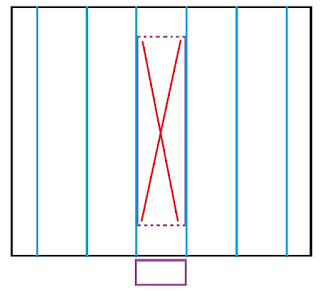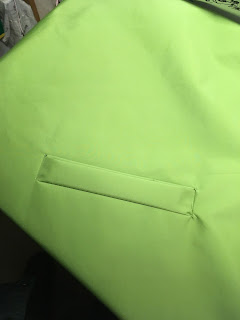In my search to sew down the stash, I wanted to use as much from the hoard as possible.
The body was from thrifted yardage of very squishy, heavy cotton track suit velour, in a lovely navy blue.
The collar lining is an old pal.
Going to have to piece this together
but I have enough!
I'm down to the scraps of this brushed Joann's poly.
 |
| you can see that central fold line. Yes, I folded and THEN I traced the half piece. HA. |
Most PDF patterns have folded pattern pieces to make the printing less onerous.
I traced them to make full pattern pieces and lay this out in a single layer for cutting. The big fold lumps (aka:turn of cloth)on a heavy fabric screw up seam matching.
The suggested fabric is sweatshirt or terry knit, and while velour is bulky, it's not very stiff.
The collar crosses over, and the intention is for it to stand up.
You could make it do this, a layer of interfacing would do the trick nicely, but I elected not to pursue that issue.
The only tricksy part ended up in handling the collar.
In sewing the pieces together and top stitching, it stretched out along that seam, making the whole assembly curve out and down, rather than up slightly.
So I trimmed it up. Making the crossover part slightly smaller.
My alterations were the usual: I shortened the body an inch, scaled the lower band to make it 1/2" (1" overall) narrower. Cause I'm 5'2" and Lisa's model is 5'7".
Once I figured that out, it was smooth sailing.
Someday I will improve on my modeling skills. I'll get right on it.
Ah, the bathroom selfie. There is no good lighting in my house. And this is a dark light absorbing fabric.
 |
| overexposed to show....collar |
Okay, I crossed the collar the wrong way....
I call it a win. It's pretty and cozy.
And, as ever, I don't get paid for this. I got paid in cozy!




































































